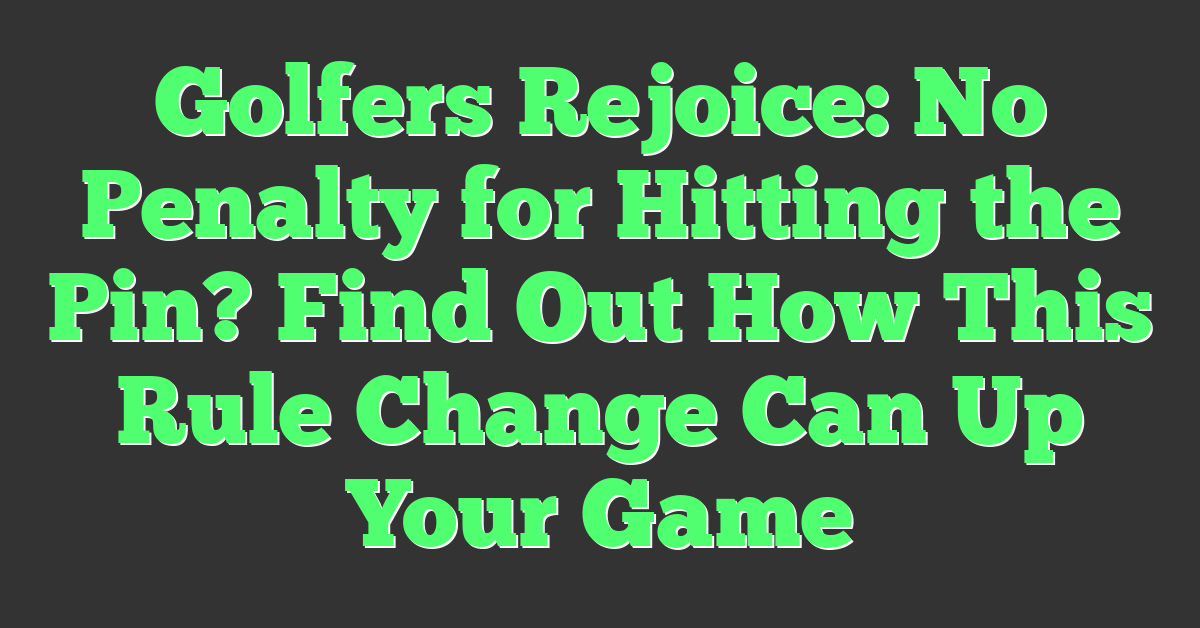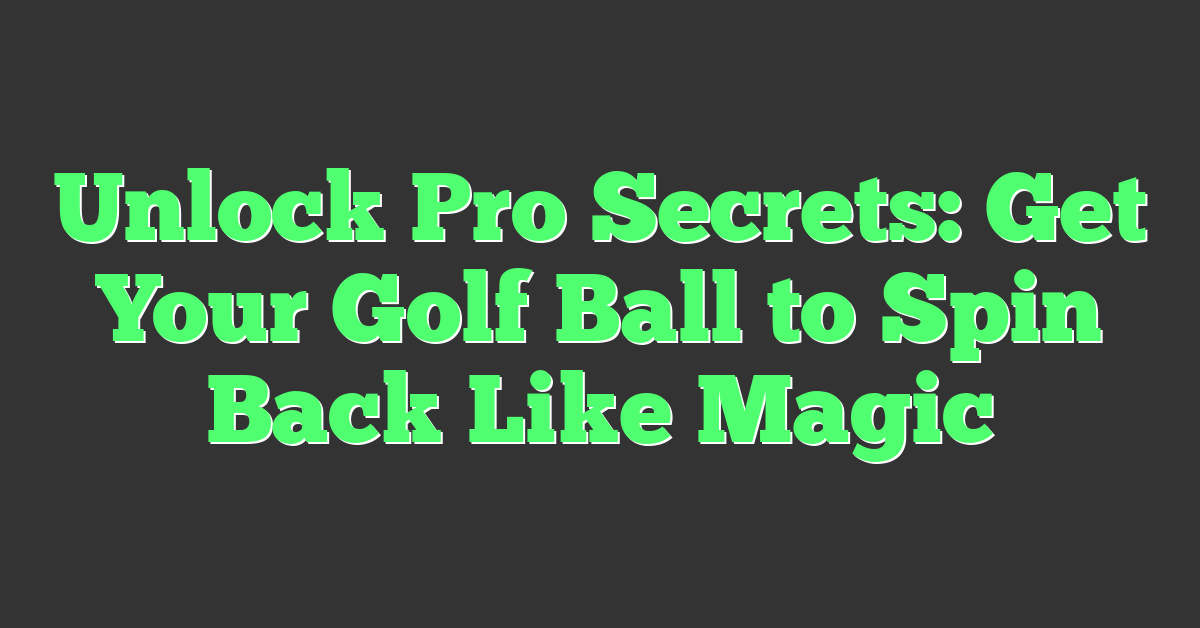Struggling with a slice can be maddening, right? You’re on the tee box, you take your swing, and there it goes—veering off to the right like it’s got a mind of its own. But what if the secret to taming that wayward shot was as simple as changing your golf ball?

Believe it or not, the right golf ball can make a world of difference. It’s not just about the clubs in your bag; it’s about what you’re hitting. So let’s dive in and find the perfect ball to help straighten out your game. You might just turn that frustrating slice into a controlled fade with the right info.
Understanding the Slice
When you’re out on the golf course, one of the most common mishits you’ll encounter is a slice. It’s that baffling shot that starts off heading in the right direction but dramatically curves to the right for a right-handed golfer (or to the left if you’re left-handed). Grappling with a slice can be downright perplexing, but know you’re not alone in wanting to straighten it out.
The origins of a slice often lie in your swing mechanics. A combination of an open clubface at impact, coupled with an outside-in swing path, sends the ball spinning off-axis, veering away from your intended line. This unintended side spin is your main adversary here.
Fine-tuning your swing to correct these flaws is the primary route to redemption. But beyond the swing itself, the equipment plays a pivotal role – particularly your choice of golf ball. When the ball is not matched well with your swing speed and style, it can exacerbate the slice.
Different golf balls have varying designs and constructions, from the number of layers – ranging from two-piece balls to multi-layered ones – to the types of dimple patterns that affect airflow and spin. For instance,
- Two-piece balls tend to promote distance and are more forgiving with off-center hits.
- Multi-layer balls can provide better control but often require a more precise strike.
Remember, the nuances of a golf ball can subtly influence shot trajectory. If you’re currently struggling with a slice, you might be using a ball that’s too responsive to spin. Experimenting with a lower spin ball could help in achieving straighter shots.
While the technical specs are essential, don’t overlook the importance of feel. The feedback you receive at impact matters—select a ball that gives you confidence and a reassuring feel as it comes off the clubface.
Arming yourself with the right golf ball could be the edge you need. It’s about creating the best conditions for a more desirable ball flight and, ultimately, enjoying the game even more. Keep this in mind during practice and watch as those frustrating slices start to disappear from your scorecard.
The Role of a Golf Ball
As a seasoned golfer, you’re always hunting for ways to refine your game and shave off a few strokes. Understand this: the golf ball you choose is not just a tool; it’s a crucial element that works in tandem with your skills and techniques to enhance your play.
Many golfers overlook the sheer influence of a golf ball on their game. But, knowing its role can be a game-changer, especially when you’re battling a persistent slice. A golf ball’s construction directly impacts flight patterns, spin rates, and overall feel on each shot. When it comes to slices, the spin you put on the ball plays a notorious role.
Consider these factors:
- Compression: Lower compression balls tend to deform and ‘squish’ more upon impact, reducing side spin, which can help mitigate a slice.
- Dimple Pattern: A unique dimple design can promote a more penetrating ball flight and stabilize the ball’s path through the air.
- Core and Cover Materials: Some balls come with a softer core or a specific cover material designed to decrease spin, which, in turn, can straighten out your shots.
When you’re out there trying to correct your slice, it’s not just about choosing any golf ball. You’ve got to select one that complements your swing speed and style. For slower swings, a lower compression ball might be your best ally. It’ll be more forgiving and less likely to exaggerate mistakes in your swing that result in a slice.
On the flip side, if you’ve got a higher swing speed, you might need a ball that gives you a better feel without cutting corners on distance. Even with a fast swing, a high-spin ball might not be the ticket if you’re trying to get rid of that slice.
Here’s the thing: practice and proper technique are absolute essentials, but pairing that dedication with a golf ball that’s tailored to your needs can go a long way. It’s about creating harmony between all facets of your game. Starting with the right equipment, including the golf ball, sets the stage for a more accurate and reliable off-the-tee performance.
Factors to Consider
When you’re on the quest to cure that pesky slice, understanding the nuances of your golf ball is crucial. Selecting the right ball involves more than just playing with what your buddies recommend or the brand you’ve seen ads for. Here’s what you should consider:
Swing Speed
Your swing speed is pivotal in choosing a ball. If you’re slicing the ball, it’s possible you’ve got a swing speed on the lighter side. Lower compression balls are typically better for slower swing speeds, as they can help reduce side spin and promote straighter flight.
- For swing speeds under 85 mph, aim for low compression.
- Over 85 mph? A medium or higher compression ball may suit you better.
Spin Characteristics
Each golf ball has a different spin profile based on its construction. To remedy your slice:
- Seek out balls with lower side spin rates.
- Prioritize options that promote straight flight and offer more forgiveness.
Dimple Pattern
Dimples on a golf ball aren’t just for show; they’re scientifically designed to influence airflow and trajectory. Balls with specific dimple patterns can help stabilize the ball, even when your swing imparts unintended side spin.
- Opt for a ball with dimples that are designed to reduce drag and encourage a straighter flight path.
Feel
It’s not all about technical specifications; the feel of the ball is equally important. Pick something that feels right to you.

- Softer feel usually equates to a softer cover, which can help with control around the greens.
- Firmer feel tends to come from a ball with a harder cover, offering potentially longer distances.
Experimentation and personal preference play significant roles here, as do conditions on the course. There’s no one-size-fits-all solution, so you might have to try a few different types to find the perfect match for your game. Remember, the ball that feels best for you and suits your game will give you the confidence needed to reduce slices and see those scores drop.
Low Spin Balls
When you’re addressing a slice, one of the first considerations might be the type of ball you’re using. Lower-spin golf balls are particularly beneficial when you’re trying to minimize the sidespin that contributes to that frustrating slice. What you’re looking for is a ball that won’t exaggerate your mistakes, and lower spin models could be exactly what the doctor ordered.
You might wonder how a ball can affect your slice. Well, the more a ball spins sideways, the more pronounced a slicing or hooking motion gets. Lower spin balls reduce that side action, thereby helping to straighten out your shots. They’re designed to decrease the amount of backspin during flight, translating to less curvature and a stronger, more piercing trajectory. This can make a dramatic difference, especially when you’re battling a persistent slice.
It might sound counterintuitive, but lower spin doesn’t always mean less distance. In fact, a common misconception is that you need a high-spin ball to achieve greater carry. The truth is, if your ball is slicing too much, you’re likely losing distance anyway. By reducing the spin, these balls help maintain both the line and length of your drives.
Here are some characteristics of low spin golf balls that you should look out for:

- Construction: Typically, two-piece construction golf balls will offer less spin compared to multi-layered ones.
- Cover Material: Surlyn or similar ionomer covers are often used in lower-spin balls as they contribute to reducing the spin rate.
- Compression: Lower-spin balls usually have a higher compression, which requires a faster swing speed to compress the ball and get the desired distance.
Remember, playing with a low spin ball could feel different at first. Your approach shots might not bite the green in the same way high-spin balls do. But if your primary battle is off the tee box, these changes in ball behavior can be a trade-off worth making. It’s essential to give yourself time on the range with these balls. Pay attention to how they respond to your swing, noting changes in flight and overall control. Over time, you could see that the dreaded slice has become far less of a problem, thanks to your new spherical ally.
Conclusion
So there you have it! Taming your slice might just be a matter of switching up your golf ball. Remember, low spin balls are your ally on the fairway, potentially reducing that pesky side spin and keeping your shots straighter. Don’t be afraid to try out a two-piece construction with a Surlyn cover—despite the lower spin, you won’t necessarily be sacrificing distance. Give yourself some time to get used to the new feel, especially when you’re close to the green. Stick with it and you’ll likely see your slice diminish, shot by shot. Happy golfing!










